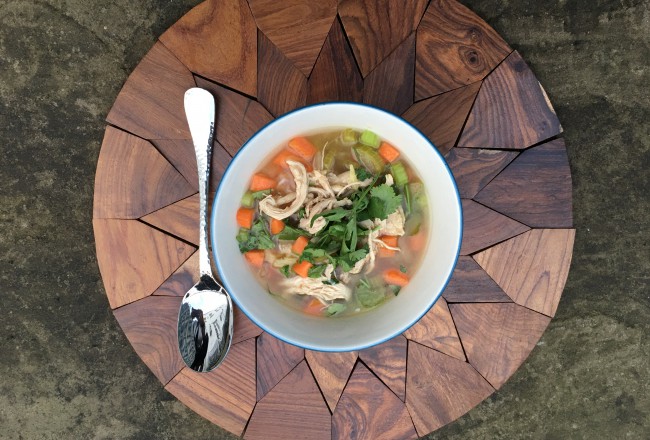There is a general consensus, rare in nutrition, that sugar is bad, and indeed many leading nutritionists have stated that it is the greatest threat to human health, bar none. Some scientists use words like “toxic” or “poison” and some go so far as to say that it is as harmful to the human body as cocaine or tobacco. Excess sugar consumption has now been linked with high cholesterol, cardiovascular disease, premature ageing, type II diabetes, obesity and cancer. Suffice to say, sugar is currently the trendy thing to hate, just like (saturated) fat in the 70’s/80’s. But why is it so bad for us? Is No-Sugar the best diet to live by? Is fruit ok? Does low glycemic index (G.I.) mean low sugar? What are hidden sugars and where are they hiding? What about the alternatives like artificial sweeteners? Can I eat unlimited unrefined natural ones? Over the next few posts we’ll explore all of these questions and any more you have on the subject – please just get in touch!
Sugar and the case for avoiding it: how sugar acts in the body and the brain
In order to understand what is bad about sugar you need to understand what it is made of. Most of the sugar we eat is sucrose, e.g. table sugar. Sucrose is made from two monosaccharide sugar molecules stuck together: one glucose molecule and one fructose molecule. When we eat sucrose, these two monosaccharides are broken apart in the digestive tract.
Glucose vs Fructose; Liver overload, insulin resistance and scary health problems
Glucose is what your body thrives on: it is the body’s main source of fuel. It is what increases our blood sugar levels which is what gets us from the gym to brunch to work to pick up the kids, do the shopping, cook dinner, etc. It fuels our day.
However it is important that we moderate our glucose intake in order to keep our blood sugar levels balanced. Well-balanced blood sugar levels lead to steady energy levels, steady moods and clear thinking. If we eat too much glucose then our blood sugar levels rise sharply triggering a corresponding sharp release of insulin (the hormone that helps to takes glucose out of the blood and into the body’s cells for use as energy or for storage as fat). This leads to a sudden drop in blood sugar levels which results in reduced energy levels, dips in mood and can lead us to crave stimulants. A constant blood sugar rollercoaster can also lead to a myriad of more serious chronic health complications.
Fructose is metabolised in the liver. As a result it does not cause the same spikes in blood sugar levels as glucose does. This, combined with the fact that fructose is found in fruit, is why fructose is often marketed as a “healthier” sugar.
However, eating large amounts of fructose may actually be more detrimental to our health than glucose consumption. The liver can cope with small amounts of fructose because it stores it as glycogen (a storage form of glucose) in the liver. However if we eat large amounts of fructose and our glycogen stores are full, the liver will instead turn fructose into fat. Excess fructose consumption is an increasing problem due to the rising trend of juice diets and, more worryingly, the increased use of high fructose corn syrup (“HFCS”) in many processed foods and drinks. HFCS is made up of 55 per cent fructose and 45 per cent glucose and its regular consumption can lead to many health complications. In HFCS (unlike in sucrose) the two monosaccharides glucose and fructose are not bound together so the body doesn’t have to do any work to digest them. Instead they are absorbed very rapidly by the body which places a huge strain on the liver as it seeks to metabolise them. This can contribute to a range of problems including raised triglycerides (a type of fat) in the blood, increased levels of bad cholesterol, ono-alcoholic fatty liver disease and insulin resistance (the precursor to Type II diabetes and a strong if not determining factor behind many other metabolic diseases). Also, unlike glucose, fructose does not stimulate the hormone leptin (the hormone that tells us we feel full) so can result in over eating and contribute to weight gain.
Proviso: It is worth noting that there is a massive variability between us – people who are healthy and active can tolerate more fructose than others because their glycogen stores may be used more readily as fuel for their activity. Inactivity contributes to fructose being turned into fat in the liver.
So, does this mean I need to avoid fruit too?
In a healthy person, the liver should be able to deal with small amounts of fructose, e.g. from consumption of two portions of whole fruit (including the skin/peel, not just the juice) each day, and these whole fruits will provide the body with important vitamins, minerals and soluble fibre so can be encouraged as part of a healthy diet, especially in children who often eat less of a variety in vegetables. It is over-consumption of fruit juice, sugar and HCFS that we should all avoid which, along with the negative health implications we’ve already mentioned, contain a lot of calories with no essential nutrients. They are just pure energy with no proteins, essential fats, vitamins or minerals. Consuming these at the expense of good quality nutrient-dense, unprocessed wholefoods, will lead to nutrient deficiencies.
My diet and our conclusions
If you make one change to your diet this year, it should be to reduce sugar consumption. It is unrealistic for me to say I would ever “give up sugar” and any sweet treats. I have a fairly sweet tooth and a fairly non addictive personality combined with a lot of self control. I can have one cookie. I can have one slice of cake. I choose not to most of the time because other foods make me feel and function better. But I do eat a small amount of sweet things every day (usually chocolate). Moderation is the crucial point here and all I would ask is that you start to become aware of the sugar in your own diet. We are writing in detail in the next post on how to spot hidden sugars but for now, download the free Sugar Smart App if you do eat a lot of packaged food – it scans barcodes and tells you sugar content. I have little to no hidden sugars in my diet; I’m not a juicer except very occasionally of vegetables, I don’t eat processed foods and sauces, cereals or granola bars and I eat out very infrequently, so having a little naughty stuff like chocolate or homemade cake is a compromise I am absolutely OK with nutritionally. That said, there are advocates for a no-sugar detox and it is one we fully believe in. If you’re going to do any detox, this is the best one to pick. It will result in a reset of the taste buds, a refocus of your attention on foods that nourish your whole body, and in the long term, it will help you know when you’ve eaten too much sugar. Adjusting your palate away from sweet things is an unqualified good.
CHIA-BERRY JAM
The recipe here is for my berry chia jam, which is a lot less sweet than any normal jam or compote, but can be used in place of either. It is really versatile, great with toast, pancakes or natural yogurt, and will last in the fridge for up to seven days. Chia seeds are one of my nutritional heroes. They contain more Omega 3 ALA and dietary fibre than any food from nature. They don’t have a great taste, but you aren’t going to notice that with the flavour and natural sweetness of fresh berries, coconut water and dates. Yes there’s fructose in there; as with anything sweet, use sparingly.
Ingredients:
3 Medjool dates, pitted, chopped and soaked for 15 minutes in 2 tbsp warm water
250g fresh berries (strawberries, raspberries, blackberries or your favourite combination)
3 tbsp chia seeds
Raw honey, maple syrup or coconut blossom nectar, to taste (as little as possible)
Method:
1. Blend date and water mixture in a food processor until smooth
2. Place all remaining ingredients into the food processor and blend until combined. If you like a smoother consistency, blend for longer
3. Taste the jam and add your favourite natural sweetener to desired taste
4. Transfer the mixture into a bowl and leave to set in the fridge to set for 1 hour minimum.









